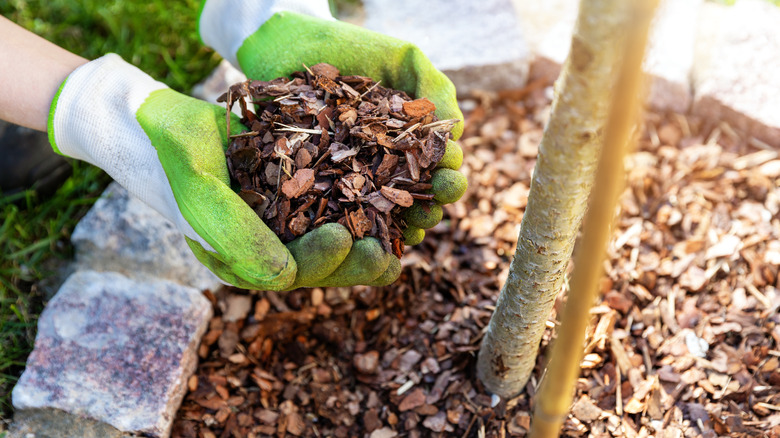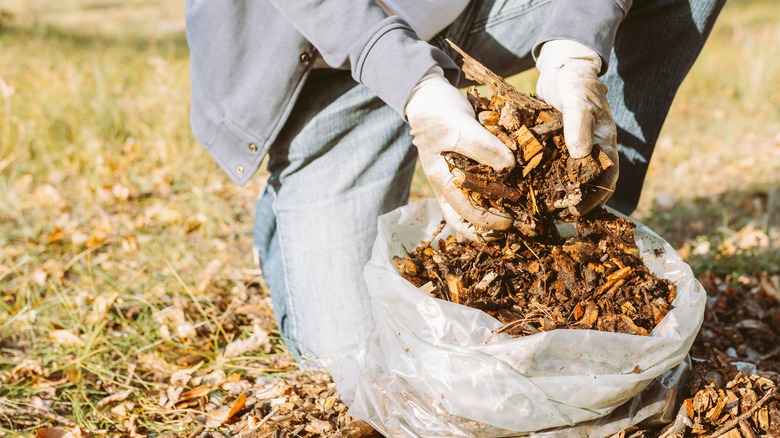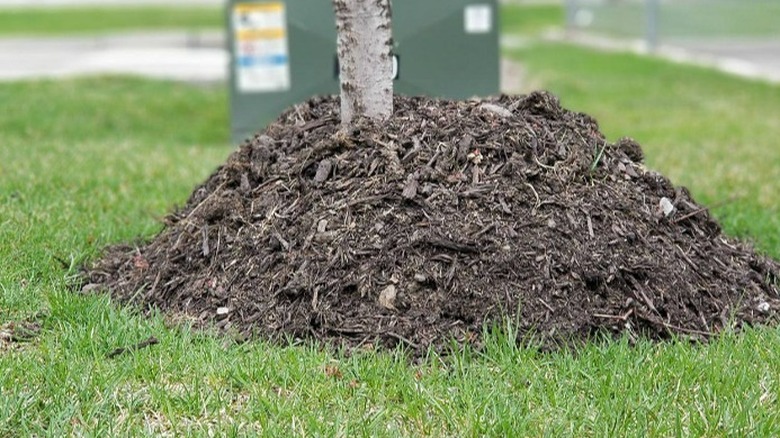Here's Why You Should Be Mulching Around Your Trees
Mulching is a vital practice that provides numerous benefits for the overall health and growth of your trees. It helps to preserve and enhance soil moisture and quality, regulates temperature, and aids in the prevention of erosion. On top of that, mulching helps prevent pest infestation and disease, suppresses weeds, and acts like a space blanket for harsh weather conditions. Not only does mulch contribute to the vitality of trees, but it also adds to the visual appeal of landscapes.
To effectively mulch around a tree, spread 2 to 3 inches of mulch uniformly, keeping a close eye that it doesn't bunk up right next to the trunk. It's important to leave a few inches of exposed space around the base of the tree so that the flare root is exposed. When mulching, it's best to apply a thin layer over a wider area to avoid the dreaded mulch volcano. This technique allows excess moisture to escape, prevents the growth of fungus, rot, and decay, and allows the flare root to be exposed, so the tree can breathe.
Any mulch will do
When it comes to mulching around your outdoor gentle giants, you don't have to be too picky. Any standard type of mulch will do, though it's always recommended that whatever mulch you choose be organic. Standard bark mulch is a common option because it looks natural and is not so purposefully landscaped. Other options are wood chips and shredded leaves. Wood chips are popular because they're inexpensive, easy to find, and do a decent job of insulating and retaining moisture. If you decide to go with wood chip mulch, keep in mind that certain types of wood waste should be aged before application. Conifer mulch, for instance, contains phytotoxic compounds that have the potential to harm younger trees.
A much safer mulch option is leaves. Shredded leaves are a bit more beneficial than whole leaves because they break down quicker, which means nutrients are released into the soil at a faster rate. If you have a baby or teenage tree, using shredded leaves is a much more beneficial way to mulch for that exact reason. That being said, faster decomposition means that you'll need to replenish your mulch more frequently. You can shred your own leaves by using a compost shredder or running your lawn mower over them to break them down.
Avoid improper mulching
Mulch volcanoes are characterized by steeply piled mulch around the tree trunk. It literally looks like your tree has sprouted up from a giant mulchy ant hill. This practice is especially detrimental in young trees because it prevents water from effectively reaching the roots. Excessive mulching can also suffocate the roots, which can shorten the tree's lifespan, or even kill it. Any moisture retained by the mulch gradually causes the bark layer to decay, which not only prevents growth but can also lead to the tree rotting from the inside out. Large piles of mulch are also the perfect environment for bugs, critters, and fungal diseases. It's like a neon hotel vacancy sign lighting up on a dark and stormy night.
Another major issue is that mulch that touches the trunk of a tree can cause something called collar rot, which occurs at the soil line where the tree emerges. Any trapped moisture at the base of your tree makes the problem even worse. To avoid collar rot and other issues, it is crucial to ensure that mulch does not come into contact with the tree trunk.


